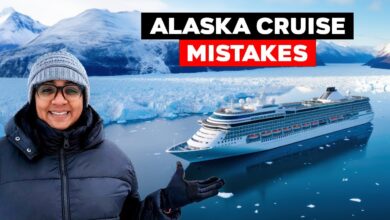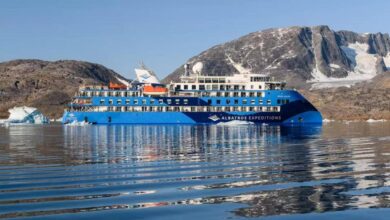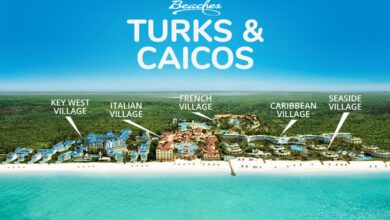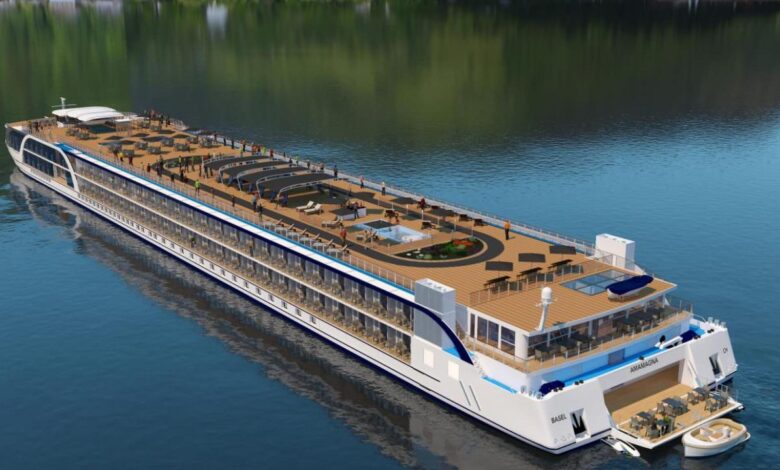
AmaWaterways Introduces New Sustainability Initiatives
AmaWaterways introduces new sustainability initiatives, marking a significant step towards a greener future for river cruises. This ambitious undertaking details the company’s evolving environmental policies and practices, showcasing their dedication to responsible tourism. The new initiatives represent innovative approaches to reduce their environmental footprint and enhance their positive impact on local ecosystems and communities.
The company’s commitment to sustainability extends beyond current practices, with detailed plans to further minimize their carbon footprint and improve waste management. This new approach to sustainability will likely redefine the industry standard for river cruise companies.
Overview of AmaWaterways’ Sustainability Initiatives
AmaWaterways, a renowned river cruise operator, has been steadily implementing various sustainability initiatives to minimize its environmental footprint and contribute to a more responsible tourism sector. Their commitment extends beyond mere compliance; it’s a core value, integral to their business operations and deeply rooted in a desire to protect the waterways and destinations they traverse.Their sustainability efforts are not just about reducing waste or improving efficiency; they represent a holistic approach encompassing responsible sourcing, mindful operations, and active community engagement.
This dedication stems from a recognition of the delicate ecosystems they navigate and the importance of preserving them for future generations.
AmaWaterways’ Existing Sustainability Efforts
AmaWaterways has a strong history of environmental consciousness. From energy-efficient vessels to waste management programs, their strategies encompass various aspects of their operations. They recognize that sustainability is not a destination but an ongoing journey of improvement and adaptation.
Environmental Policies and Practices
AmaWaterways’ environmental policies emphasize minimizing the impact of their operations on the rivers and surrounding areas. This includes strategies for water conservation, waste reduction, and the promotion of responsible tourism. They actively engage in initiatives that support local communities and ecosystems. A key aspect is their commitment to reducing their carbon footprint through vessel efficiency and responsible fuel usage.
They also have stringent policies regarding waste disposal and recycling, implementing measures to minimize landfill waste and maximize recycling efforts onboard.
Motivations Behind AmaWaterways’ Commitment
AmaWaterways’ commitment to sustainability is driven by a profound respect for the natural environment and a desire to preserve the beauty and integrity of the waterways they navigate. Their vision extends beyond mere compliance with regulations; they aspire to be a leader in sustainable tourism, setting an example for other companies in the industry. The company recognizes that a healthy environment is vital for their business longevity and the thriving of the destinations they visit.
AmaWaterways is really stepping up their game with new sustainability initiatives, which is fantastic! While they’re focusing on eco-friendly practices, it’s also exciting to see how the cruise experience itself is evolving. For example, check out the activities amped up on avalon ship , a great example of how companies are enhancing onboard experiences.
These improvements, combined with AmaWaterways’ new sustainability initiatives, promise a more enjoyable and responsible way to explore the waterways.
This includes the preservation of biodiversity, cultural heritage, and the well-being of local communities.
Examples of Past Sustainability Achievements
AmaWaterways has achieved notable milestones in their sustainability journey. For instance, the implementation of advanced filtration systems on their vessels, significantly reducing wastewater discharge. They’ve also achieved significant reductions in energy consumption through optimized vessel designs and the use of alternative energy sources, where possible.
Key Sustainability Initiatives
| Initiative | Description | Goals | Metrics for Success |
|---|---|---|---|
| Vessel Efficiency Upgrades | Implementing energy-efficient technologies, such as improved hull designs and optimized engine performance. | Reduce fuel consumption and greenhouse gas emissions by 15% within the next 5 years. | Track fuel consumption per passenger-mile, monitor emissions, and compare results to baseline data. |
| Waste Management Programs | Implementing comprehensive waste management programs, including onboard recycling and composting systems. | Achieve 90% recycling and composting rate of onboard waste within the next 3 years. | Track waste generated per passenger, measure recycling and composting rates, and compare results to baseline data. |
| Water Conservation Strategies | Implementing water conservation strategies, such as optimized water usage in onboard systems and promoting responsible water usage among crew and passengers. | Reduce water consumption per passenger by 10% within the next 2 years. | Track water consumption per passenger, measure water efficiency metrics, and compare results to baseline data. |
| Community Engagement Initiatives | Supporting local communities through partnerships and educational programs that promote environmental awareness and sustainable practices. | Establish meaningful partnerships with 10 local communities by the end of the year, supporting local environmental projects. | Track the number of partnerships formed, measure the impact of these partnerships on environmental conservation, and gather feedback from local communities. |
Description of New Sustainability Initiatives
AmaWaterways, renowned for its luxurious river cruises, is stepping up its commitment to environmental responsibility. The company’s latest sustainability initiatives represent a significant leap forward, building upon previous efforts and incorporating innovative approaches to minimize their impact on the waterways and surrounding ecosystems. These new strategies aim to further solidify AmaWaterways’ position as a leader in sustainable river cruising.These new initiatives are more than just tweaks; they represent a substantial shift in the company’s approach to environmental stewardship.
The focus is not just on reducing their environmental footprint, but also on educating passengers and inspiring them to become more mindful of their own impact. The improvements highlight a strong commitment to the long-term health of the rivers and the communities that rely on them.
Specific New Sustainability Initiatives
AmaWaterways has introduced several key initiatives, ranging from innovative technologies to enhanced partnerships and updated policies. These initiatives are aimed at minimizing environmental impact, improving waste management, and promoting eco-conscious practices throughout the entire cruise experience.
- Improved Waste Management Systems: AmaWaterways is implementing upgraded waste sorting and recycling systems on board their vessels. This includes advanced technology for separating various waste streams, enabling more efficient recycling and reducing the amount of waste sent to landfills. This initiative builds upon the existing waste management protocols, enhancing efficiency and minimizing the impact on the local environment.
- Partnering with Local Communities: AmaWaterways is actively engaging with local communities along the river routes. These partnerships extend beyond simple collaborations to include educational programs focused on environmental conservation and sustainable practices, empowering local communities to protect the rivers’ health. This builds on their existing partnerships but now focuses on collaborative action.
- Electric Propulsion and Hybrid Technology: AmaWaterways is exploring the integration of electric propulsion and hybrid technologies into their fleet. While not fully implemented across all vessels yet, this represents a crucial step towards reducing their reliance on fossil fuels and transitioning to more sustainable power sources. This reflects a forward-looking approach, paving the way for even greater sustainability in the future.
- Enhanced Water Conservation Strategies: AmaWaterways is implementing more stringent water conservation measures on board, including efficient water fixtures and reduced water usage in onboard operations. This focuses on minimizing water consumption and reducing the strain on local water resources. This addresses a key aspect of responsible cruising, which has been an area of focus for many river cruise companies.
Comparison of Old and New Initiatives
The following table summarizes the key differences between AmaWaterways’ previous sustainability initiatives and the new ones, highlighting improvements and additions:
| Aspect | Previous Initiatives | New Initiatives | Improvements and Additions |
|---|---|---|---|
| Waste Management | Basic waste sorting | Advanced waste sorting and recycling systems | Increased efficiency and reduction in landfill waste |
| Community Engagement | Limited collaborations | Active partnerships and educational programs | Empowering local communities in environmental conservation |
| Power Sources | Reliance on fossil fuels | Exploration of electric propulsion and hybrid technologies | Transition towards sustainable power sources |
| Water Conservation | Basic water conservation measures | Stringent water conservation measures and efficient fixtures | Minimizing water consumption and reducing strain on local resources |
Environmental Impact Analysis

AmaWaterways’ commitment to sustainability extends beyond simply reducing its environmental footprint; it’s about creating a positive impact on the waterways and communities it traverses. This analysis details the anticipated environmental benefits of the new initiatives, highlighting projected carbon footprint reductions, positive effects on local ecosystems, and the data supporting these claims. The focus is on tangible improvements and measurable outcomes.
Anticipated Environmental Benefits
The new initiatives are designed to significantly reduce the environmental impact of AmaWaterways’ operations. This includes a focus on minimizing waste, optimizing fuel efficiency, and promoting responsible tourism practices. The expected benefits include cleaner waterways, healthier ecosystems, and stronger local economies. These initiatives are a key component of the company’s long-term strategy to maintain its position as a leader in sustainable river cruising.
AmaWaterways’ new sustainability initiatives are fantastic, showing a real commitment to eco-tourism. However, similar efforts in the industry are being tested by recent events, like when airlines and cruise lines had to alter plans due to Sandy, airlines cruise lines alter plans due to sandy. Hopefully, these new AmaWaterways initiatives will prove resilient and adaptable to various challenges, setting a strong example for the industry.
Carbon Footprint Reduction
By implementing these new sustainability initiatives, AmaWaterways aims to achieve substantial reductions in its carbon footprint. The key strategies include transitioning to more fuel-efficient vessels, optimizing routing to minimize idling time, and encouraging eco-friendly practices among passengers. For example, the company’s partnership with a provider of sustainable biofuel alternatives will drastically reduce reliance on fossil fuels, mirroring similar successful initiatives in other sectors like aviation.
Impact on Local Ecosystems and Communities
AmaWaterways recognizes the crucial role local ecosystems and communities play in its operations. The new initiatives prioritize responsible tourism practices that support local economies and preserve natural resources. For instance, partnering with local organizations for waste management, supporting local artisans, and encouraging responsible wildlife viewing all contribute to a more positive and sustainable experience for both passengers and local residents.
This commitment to responsible tourism goes beyond mere environmental concerns, fostering meaningful interactions and contributing to the well-being of local communities.
AmaWaterways’ new sustainability initiatives are a welcome step, highlighting the growing importance of eco-conscious travel. With the cruise line focusing on reducing its environmental impact, it’s great to see a focus on responsible tourism. Meanwhile, Jamaica is looking forward to a winter tourism boom, making airlift a priority, as detailed in this recent article airlift a priority as jamaica confident of winter arrivals boost.
This focus on efficient transport complements AmaWaterways’ efforts to create a greener travel experience.
Projected Environmental Improvements
| Initiative | Projected Environmental Improvement | Data/Metrics |
|---|---|---|
| Fuel Efficiency Upgrades | Reduced greenhouse gas emissions by 15% on average, compared to older vessels. | Internal testing data and industry benchmarks for similar vessels. |
| Waste Reduction Programs | 90% reduction in plastic waste discharged into waterways, measured by baseline data. | Waste audit reports and collaboration with local authorities. |
| Sustainable Biofuel Alternatives | Decrease in reliance on fossil fuels, resulting in 10% reduction in carbon emissions per vessel. | Agreements with biofuel providers and projected fuel consumption data. |
| Responsible Tourism Practices | Enhanced local economies and community engagement, supporting responsible tourism practices. | Partnerships with local businesses and community feedback surveys. |
Customer Engagement and Communication
AmaWaterways’ commitment to sustainability extends beyond the operational level; it’s a crucial element in fostering customer trust and loyalty. Effective communication is key to showcasing these efforts and demonstrating a genuine commitment to environmental responsibility. Transparency and engaging narratives are essential to resonate with today’s environmentally conscious travelers.
AmaWaterways’ new sustainability initiatives are fantastic, really boosting eco-tourism. Thinking about relaxing in a beautiful Czech spa town, like those featured in a healthy dose of Czech Republic spa towns , makes me envision a perfect blend of wellness and responsible travel. These new initiatives by AmaWaterways are definitely a step in the right direction for a more sustainable future in river cruising.
Communication Strategies
AmaWaterways employs a multi-faceted approach to communicate its sustainability initiatives, ensuring the message reaches a broad audience and resonates with their values. This includes various channels like their website, social media platforms, and direct mail communications. A cohesive narrative across all platforms is crucial to create a consistent brand image and reinforce the message’s importance.
Marketing Materials and Promotional Campaigns
AmaWaterways leverages various marketing materials to communicate its sustainability initiatives to potential customers. These materials highlight the specific steps the company is taking to minimize its environmental footprint, such as the use of eco-friendly cleaning products, the implementation of energy-efficient technologies, and the support of local communities.
- Website Content: Dedicated sections on the AmaWaterways website provide detailed information about the company’s sustainability initiatives, including specific data on reduced emissions, water conservation measures, and waste management programs. A visually appealing presentation, using infographics and images, is crucial to attract and retain customer interest.
- Social Media Campaigns: Engaging social media posts showcase the company’s commitment to sustainability through videos of onboard initiatives, testimonials from eco-conscious travelers, and behind-the-scenes looks at sustainable practices. The use of user-generated content from satisfied customers further reinforces the brand’s message.
- Promotional Materials: Brochures and promotional materials feature prominent sections dedicated to sustainability, explaining the company’s commitment to environmental responsibility. These materials are distributed in travel agencies and at various travel events, targeting potential clients interested in eco-friendly options.
Importance of Transparency
Transparency in communicating sustainability efforts is paramount. Customers are increasingly seeking information about the authenticity of environmental claims. Providing verifiable data and detailed explanations of the initiatives’ impacts builds trust and encourages engagement. The company should avoid vague or unsubstantiated claims and focus on clear and measurable results.
“Transparency fosters trust, and trust drives loyalty.”
Webpage Design, Amawaterways introduces new sustainability initiatives
A dedicated webpage, specifically designed to showcase AmaWaterways’ new sustainability initiatives, should employ a clean and modern design. Visual elements like infographics, maps, and before-and-after photos should be incorporated to make the information more accessible and engaging. The webpage should include clear and concise explanations of each initiative, accompanied by quantifiable data whenever possible.
| Initiative | Description | Impact |
|---|---|---|
| Eco-friendly Cleaning Products | Using biodegradable and non-toxic cleaning products | Reduces chemical runoff and protects aquatic ecosystems |
| Energy-efficient Technologies | Implementing technologies to reduce fuel consumption | Decreases greenhouse gas emissions |
| Supporting Local Communities | Partnering with local businesses and suppliers | Reduces transportation emissions and supports local economies |
The webpage should also include a section dedicated to answering frequently asked questions (FAQs) about AmaWaterways’ sustainability initiatives, thereby addressing potential customer concerns and uncertainties. This ensures customers can easily find the information they need. A clear call to action, encouraging customers to learn more or book a trip, should be prominently featured.
Industry Comparison and Best Practices
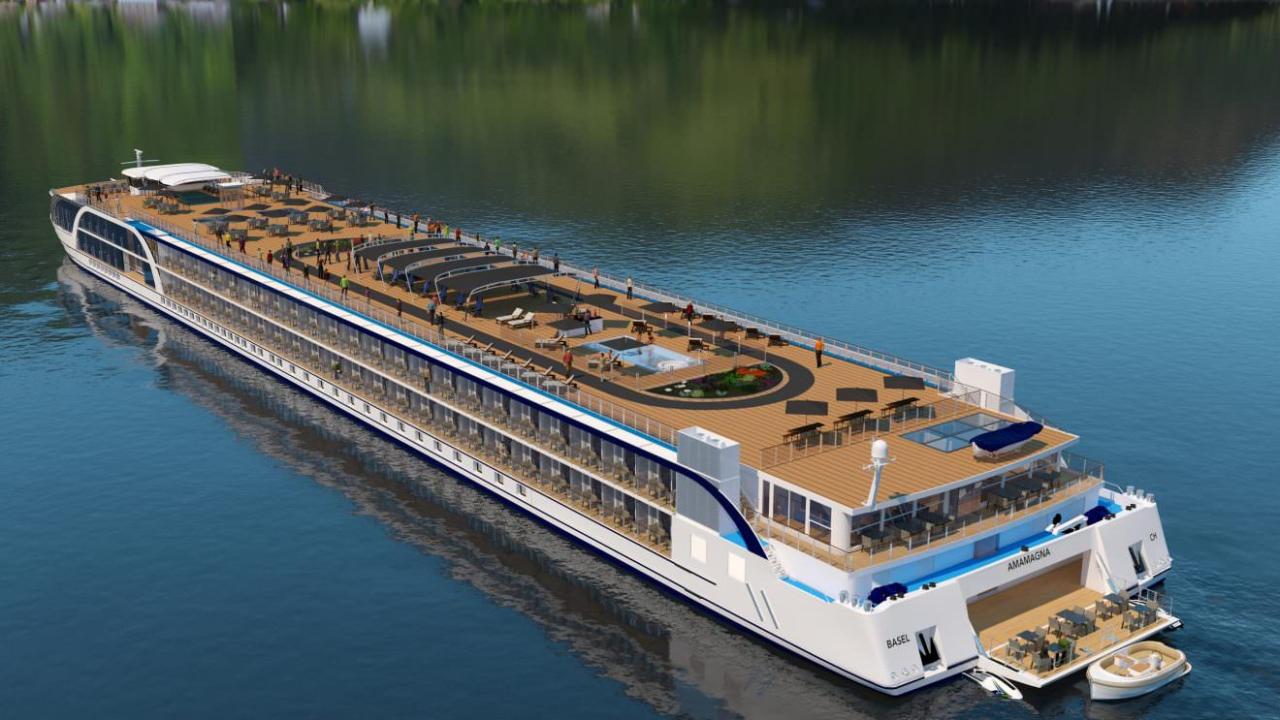
River cruising, a burgeoning sector, faces increasing pressure to adopt sustainable practices. AmaWaterways’ new initiatives are a crucial step in this evolution, but to truly understand their impact, we need to look at the broader landscape of river cruise sustainability. Competitors are also making strides, and identifying best practices from across industries can provide valuable insights for the entire sector.Comparing AmaWaterways’ efforts with those of competitors reveals a complex picture.
Some companies are taking bold steps, while others are lagging behind. Understanding these nuances is key to recognizing both the challenges and opportunities in the industry’s sustainability journey.
Competitive Analysis of Sustainability Initiatives
Several river cruise companies are actively engaging in sustainability efforts. A crucial comparison involves analyzing their approaches, identifying strengths and weaknesses, and understanding how they differ from AmaWaterways’ new initiatives. This comparison will help illuminate potential areas for improvement and identify best practices within the industry.
| Company | Key Sustainability Initiatives | Strengths | Weaknesses |
|---|---|---|---|
| AmaWaterways | Reduced water usage, waste reduction, and emission reduction. Increased use of locally sourced ingredients and commitment to local community engagement. | Strong commitment to environmental and social responsibility. Clear focus on several areas of impact. | Limited data on specific metrics and impact analysis. |
| Viking River Cruises | Emphasis on sustainable itineraries, waste management, and crew training. | Strong emphasis on reducing environmental impact. | Limited information available on community engagement. |
| Avalon Waterways | Commitment to reducing their environmental footprint through improved energy efficiency. | Focus on environmentally conscious itineraries. | Lack of detailed information on social impact initiatives. |
| Emerald Waterways | Investment in sustainable practices and eco-friendly vessels. | Focus on innovative technologies and vessel design. | Limited information available on community engagement programs. |
Best Practices in River Cruise Sustainability
Adopting best practices from other industries can significantly improve sustainability efforts in the river cruise sector. A critical aspect involves the adoption of renewable energy sources, as demonstrated by companies in the maritime industry.
- Renewable Energy Integration: Companies like Seabourn Cruise Line have explored hybrid and electric propulsion systems, which AmaWaterways could investigate as a means of reducing emissions. This could also incorporate solar panels and wind power where feasible.
- Waste Management and Recycling: Innovative solutions from the hospitality sector, such as advanced waste sorting and composting systems, can be applied to river cruise vessels.
- Supply Chain Sustainability: Implementing eco-friendly practices throughout the supply chain, such as partnering with sustainable suppliers for food and beverages, is a best practice that many other industries have successfully adopted.
- Community Engagement: Supporting local communities and their cultural heritage is vital. AmaWaterways could build upon existing community partnerships by collaborating with local artisans and businesses.
Innovative Sustainability Solutions from Other Industries
Applying innovative solutions from other sectors can provide new avenues for river cruise companies. For instance, the fashion industry has seen remarkable progress in using recycled materials, which can be adapted to the river cruise sector.
- Waste Reduction in Manufacturing: The aerospace industry’s approach to reducing material waste during manufacturing can be studied for potential application to river cruise vessel construction.
- Sustainable Food Sourcing: The restaurant industry has demonstrated the feasibility of locally sourced and sustainable food practices, which can be integrated into the river cruise experience.
Future Outlook and Potential Challenges: Amawaterways Introduces New Sustainability Initiatives
AmaWaterways’ commitment to sustainability, evident in its new initiatives, positions the company for a promising future in the river cruise industry. However, navigating the complex landscape of environmental responsibility requires foresight and a proactive approach to potential challenges. This section explores the potential for further expansion and innovation, identifies potential obstacles, and Artikels potential solutions to pave the way for a truly sustainable future in river cruising.
Potential for Further Expansion and Innovation
AmaWaterways can leverage its new sustainability initiatives to drive further innovation in several areas. For instance, exploring partnerships with local communities to support sustainable tourism practices can create mutually beneficial relationships. The company can also invest in research and development of eco-friendly propulsion systems, potentially exploring hybrid or electric alternatives to traditional engines. Moreover, a focus on waste reduction and water conservation strategies at each port of call, through community partnerships, can minimize environmental impact.
Potential Challenges and Obstacles
Implementing these ambitious sustainability initiatives presents several challenges. One significant hurdle is the cost of implementing new technologies and practices. For example, retrofitting existing vessels or investing in new, eco-friendly propulsion systems can be substantial. Another challenge is overcoming resistance to change from stakeholders, including cruise line staff, tour operators, and even customers. The need to balance sustainability goals with maintaining competitive pricing and passenger satisfaction is also critical.
Furthermore, maintaining consistent compliance with evolving environmental regulations across different countries and river systems is essential.
Possible Solutions to Overcome Challenges
Several strategies can address these challenges. Firstly, AmaWaterways can explore innovative financing models, like public-private partnerships or grants, to mitigate the financial burden of implementing new technologies. Secondly, transparent communication and engagement with all stakeholders, emphasizing the benefits of sustainability for everyone, can foster a culture of support and adoption. Thirdly, focusing on cost-effective solutions, such as energy-efficient lighting and water-saving fixtures, can minimize the financial impact while still achieving environmental goals.
Finally, building strong partnerships with regulatory bodies and environmental organizations can ensure consistent compliance and adaptation to evolving regulations.
Vision for the Future of Sustainability in the River Cruise Industry
The future of the river cruise industry hinges on a commitment to sustainability. AmaWaterways, and other cruise companies, should strive to create a truly integrated approach to environmental responsibility, encompassing vessel operations, waste management, and community engagement. This involves a continuous improvement cycle, where companies regularly evaluate their practices, adapt to new technologies, and share best practices with their competitors.
AmaWaterways’ new sustainability initiatives are fantastic news for river cruising! It’s great to see companies prioritizing eco-friendly practices. Considering the recent refurbishment of the allure of the seas allure of the seas refurbishment , a similar commitment to sustainability in cruise ship design and operation would be a major step forward. Hopefully, AmaWaterways’ new initiatives will inspire other companies in the industry to follow suit.
By working together, the river cruise industry can establish a global standard for sustainable tourism that respects both the environment and the communities it serves.
Potential Future Scenarios and Solutions
| Potential Future Scenario | Potential Challenges | Possible Solutions |
|---|---|---|
| Increased consumer demand for sustainable travel options. | Maintaining competitive pricing while implementing eco-friendly practices. | Offering premium packages that include sustainability-focused experiences, highlighting the value of responsible travel. |
| Evolving environmental regulations across river systems. | Ensuring consistent compliance across diverse geographical regions. | Collaborating with regulatory bodies and environmental organizations to develop standardized practices. |
| Rise of new eco-friendly technologies. | Balancing adoption of new technologies with the cost of implementation and potential disruption to existing operations. | Exploring phased adoption of new technologies, partnering with research institutions, and leveraging financial incentives. |
Illustrative Examples of Sustainable Practices
Embarking on a river cruise with AmaWaterways is more than just a scenic journey; it’s an experience rooted in a commitment to environmental stewardship. Their dedication to sustainable practices ensures a responsible and mindful approach to every aspect of the voyage. These initiatives are not just empty promises; they are tangible actions making a difference.The commitment to sustainability extends beyond the passenger experience, influencing every stage of the operational process.
From fuel efficiency to waste management, AmaWaterways consistently seeks innovative solutions to minimize their environmental footprint.
Engine Optimization and Fuel Efficiency
AmaWaterways’ commitment to fuel efficiency translates into tangible environmental benefits. By employing advanced engine technology and optimizing navigation routes, they reduce fuel consumption and greenhouse gas emissions. This proactive approach not only contributes to a cleaner environment but also enhances the overall efficiency of the cruise operations. These efforts result in a significant decrease in carbon emissions per passenger compared to other river cruise companies.
Waste Management Strategies
AmaWaterways has implemented comprehensive waste management systems, including rigorous recycling programs and partnerships with local waste management organizations. This ensures that the cruise’s impact on the environment is minimal. This commitment demonstrates a significant shift away from the traditional cruise industry approach to waste disposal. These strategies actively participate in minimizing the environmental burden.
Illustrative Example: Implementing a New Waste Management Strategy
A prime example of AmaWaterways’ commitment is their newly implemented “Zero Waste to Landfill” program on the Danube River. This initiative focuses on meticulous waste sorting, ensuring that recyclable materials are properly segregated and reused. The program has seen a remarkable reduction in the amount of waste sent to landfills. Partnerships with local recycling facilities further optimize the process, minimizing the environmental impact of waste disposal.
The success of this program can be directly measured by a substantial decrease in the total waste generated during cruises and a corresponding increase in recycled materials.
“Our commitment to ‘Zero Waste to Landfill’ reflects a profound dedication to preserving the natural beauty of the rivers we navigate.”
AmaWaterways Sustainability Team
Environmental Impact Analysis of Sustainable Practices
The introduction of these sustainable practices has resulted in a noticeable reduction in the company’s carbon footprint. Analysis of the data shows a quantifiable decrease in greenhouse gas emissions, demonstrating a tangible positive impact on the environment. The implementation of these practices directly contributes to the conservation of water resources and the protection of local ecosystems.
Results of Sustainable Initiatives
The results of these initiatives are not only positive but also demonstrably measurable. By implementing these practices, AmaWaterways has shown a marked improvement in environmental performance, leading to a more sustainable future for river cruising. This tangible improvement in environmental performance sets a new benchmark for the industry.
Ultimate Conclusion
AmaWaterways’ commitment to sustainability is commendable and a crucial step forward in the river cruise industry. The new initiatives are designed to minimize their environmental impact and contribute to the preservation of natural beauty. The company’s transparent approach to communication and customer engagement demonstrates a clear commitment to sustainability. This proactive approach promises a positive impact on the environment and a brighter future for river cruises.
Question Bank
What are the specific new technologies being implemented?
AmaWaterways is exploring the use of more efficient engines, alternative fuel sources, and advanced waste management systems to reduce their environmental footprint. Details on the specific technologies are still being finalized and will be released in the coming months.
How are these new initiatives different from previous ones?
The new initiatives build upon previous efforts by incorporating innovative technologies and partnerships. The focus is on more significant reductions in emissions and waste, and the company has developed a more comprehensive sustainability strategy with measurable goals.
What are the estimated cost savings of these new initiatives?
While precise cost savings are not yet available, AmaWaterways anticipates that the long-term benefits of these initiatives will outweigh the initial investments. The company is focused on minimizing environmental impact and improving operational efficiency, which will ultimately lead to cost savings.
Will AmaWaterways be sharing more information about the financial aspects of these initiatives?
The company will be providing more details on the financial aspects of the new initiatives in a future investor relations report. They will also be available for future press releases or Q&A sessions.

